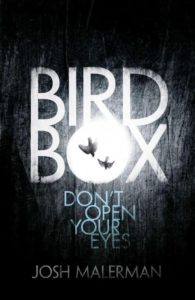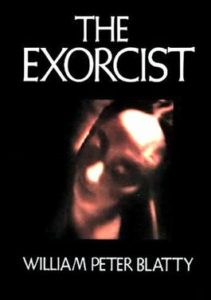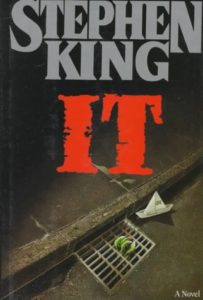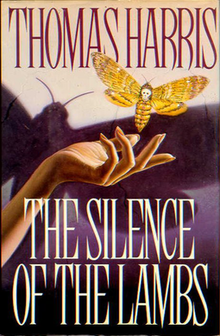What makes a good horror story or novel? What are the key elements?
Ask a dozen horror writers that question, and you’ll probably get twelve different responses. But I’m willing to bet there would be some overlap as well. That’s where the true wisdom lies.
The genre has been around for so long, we have a pretty good idea as to what works and why. At its core, a good horror story or novel creates believable (and sometimes ordinary) characters and puts them into extreme situations. Situations where they must deal with some terrible challenge or foe.
That’s a bare minimum. Now let’s go above and beyond.
5 Elements That Make a Good Horror Novel
Here are my thoughts on what makes a good horror novel or story. I’ve boiled it down to five key elements. Use these fiction components in your next horror tale, and you’ll be on the right path.
1. Give readers a protagonist they can care about.
Some fiction-writing gurus claim that, with novels, the reader doesn’t necessarily have to like the protagonist or main character. But they have to at least relate to her. They have to understand what drives the protagonist, what her motivations are, etc.

I believe that when it comes to horror novels, it’s important to create characters the reader can truly care about. That doesn’t mean your protagonist has to be flawless. Nobody wants to follow a Mary Sue type of character for hundreds of pages. So flaw them up. Flaws make them more realistic, more believable.
But despite those flaws — or maybe even because of them — you want the reader to care about your main character(s).
Why?
Because if readers don’t care about your protagonist, you’re stripping some of the terror out of your horror novel. You want readers to fear the key horror element within your novel, whether it be a vampire, a madman, or a serial killer. But you also want them to fear for the safety of the characters. Above all else, this is what keeps them turning pages.
We’re tapping into empathy and compassion here. Empathy creates horror in the mind of a reader. When readers can relate to a character’s actions and motivations, they are more likely to care about those characters. They can relate. They feel compassion toward him. They truly care whether or not he lives or dies. If you can arouse that kind of empathy, your readers will follow you (and your story) almost anywhere. And that’s priceless.
2. Create something or someone to be feared.
So, you’ve created a protagonist that readers can care about. You’ve colored in the details, the characteristics and backstory, until you have the literary equivalent of a living, breathing and feeling person.

Now what?
Next, you need to create something to be feared. This is your monster. It doesn’t have to be an actual monster, though it certainly could. Your “monster” might be a person, a demonic entity, or society itself (as in Shirley Jackson’s The Lottery). Whatever it is, it needs to terrible enough to arouse fear in the reader.
See also: How to start a horror novel
This relates back to your characters. If you make your “monster” truly terrifying, readers will be even more concerned about that protagonist you worked so hard to develop. They’ll fear the terror itself. But more importantly, they’ll fear for the safety of your character. That keeps them immersed in the story.
3. Pull readers out of their comfort zone.
Shock is another factor that makes for a good horror novel, when used well. I’m not talking about “shock” in the gratuitous or gory sense. I’m talking about an idea, image or moment that the reader doesn’t see coming — a moment they couldn’t have imagined.

In 1986, Stephen King gave us a creepy clown in a sewer with his novel IT. No one had ever imagined such a thing, and that’s partly what made it so scary.
A malicious, cosmic entity manifests as a clown and lurks in a small-town sewer, trying to lure children within arm’s reach. Comfort zone, demolished!
The Pennywise sewer scene from that novel — and the whole idea behind it — pulls us way outside of our comfort zone. We like to think of sewers and storm drains as harmless components of neighborhood infrastructure.
Most people don’t think about sewers and storm drains at all. They’re just there, doing their jobs, day in and day out. Innocuous and predictable.
But by turning them into a subterranean passage for an evil entity, King smashes through the reader’s comfort zone. This is a key component that makes for a good horror novel. You have to pull readers into the dark.
You can shock your readers in many ways. You don’t have to use gimmicks or gratuitous ugliness. All you have to do is take something the reader knows and understands, and present it in some new way. Find the dark side of it. Twist it up. Pervert it.
4. Tap into common fears or anxieties.
What do we fear?
The answer of course, is that it varies. Different people are afraid of different things. But there are some things that most people fear, and you can use them to write a good horror novel. You can tap into universal terrors.
Here are some novels that tap into our common fears:
| Novel | Fear |
| Jaws | What lurks beneath the water when we are swimming? |
| The Shining | Being totally cut off from the outside world |
| Rosemary’s Baby, The Exorcist | What the hell’s wrong with my kid??? |
| Hell House | A creepy old mansion with a dark past |
| The Silence of the Lambs | Serial killers who walk among us |
Let’s use darkness as an example. Many people fear the dark, on some level and at some point in their lives. It starts early. We begin our lives with this kind of fear. It’s a hallmark of childhood.
Think about it. Have you ever heard a young child say: “Mom, can you close my door tonight? I like it nice and dark when I sleep!” Probably not.
Tapping into these common fears can make a good horror novel. Now, I’m saying you have to write an entire novel about people wandering around in the dark. (Though you certainly could.) I’m saying you can harness and amplify these common fears to make your book more vivid and relatable for the reader — and more terrifying.
5. Raise the stakes in your horror novel.
What makes a good horror novel? We’ve covered some of the key elements already. You want a character, or characters, the reader can care about. You need something that threatens those characters, be it a villain or monster. You need to push readers outside of their comfort zone, shake things up, turn their expectations upside down.
It also helps to raise the stakes. And by this, I mean increasing the threat and the risks associated with that threat.
Let’s say you’re writing a horror novel where a couple are camping in the woods. Unbeknownst to them, a dark force lives in those woods. Maybe it’s the spirit of a witch who was burned on the site centuries before. Maybe it’s a psychopath who has escaped a nearby institution.
Now let’s consider two versions of the story:
- Version 1: The couple, both in their thirties, are alone in their tent.
- Version 2: The couple have taken their six-year-old daughter along for her first camping trip.
With the second version, the stakes have been raised considerably. It’s not just a couple of adults in danger. There’s a kid along for the ride. The couple not only have to protect themselves, but their child as well. They also have to deal with her fear, which is probably much greater than their own.
There are many ways to raise the stakes within a horror novel, and your story will be better as a result. For starters, ask yourself what your protagonist stands to lose if he or she fails? In horror novels, the most obvious answer is that the main characters loses her life. And those are pretty high stakes. But you can raise the stakes even more by putting other things at risk.

Let’s consider The Silence of the Lambs. In this novel, FBI agent Clarice Starling puts herself in danger by going after the skin-loving serial killer known as “Buffalo Bill.” That’s frightening on its own.
But Thomas Harris raises the stakes in this novel by having a killer who prays on women and shows no sign of stopping anytime soon. He’s not just a threat to Agent Starling, the protagonist. He’s a threat to all women who live in the area, especially plus-sized women.
Those are some pretty high stakes. And they keep you turning the pages.
Building Upon This List
This is not a blueprint or template for a good horror novel. Nor is this list exhaustive. These are just my own thoughts on the subject. This list could have gone longer. But I had it to cut it off somewhere, and “5 Key Components” looked good in the title. So there you go!
As always, I’d love to hear your thoughts. Whether you’re a horror writer or reader, or both, I’m sure you have some great input on this subject.
What do you think makes a good horror story or novel? Comment below!
